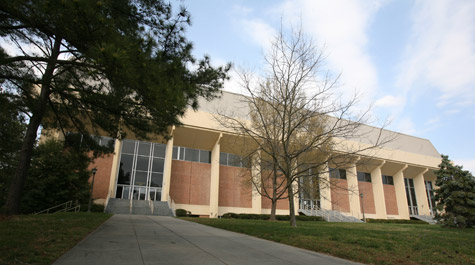After a round of campus-wide COVID-19 testing that began the week of Oct. 18, the College of William and Mary alerted students Sunday, Nov. 1 that 19 students received false-positive results. The affected students were contacted by the College’s case managers and subjected to quarantine protocols. Though the results have been confirmed to be false positives, the students will remain in isolation housing until they have been cleared by a case manager.
In an email to the campus community, COVID-19 Response Team Chair Sam Jones said that the positive results appeared to be outliers when compared to the results of census testing and ongoing wastewater testing. Jones noted that over 20 positive tests yielded from this round of testing did not align with the number of positives yielded from the two previous rounds of campus-wide testing.
The College requested that both Kallaco Health and Technology and Wisconsin Diagnostics Laboratories perform integrity reviews of the tests. It was determined that Kallaco accurately reported the data it received from Wisconsin Diagnostics. Ultimately, Wisconsin Diagnostics announced that 19 of the tests were reported as false positive as a result of a lab error. The 19 tests were repeated using the original specimens and all yielded negative results.
Currently, the number of active positives remains below 10. Fifty-one students in total have tested positive since August. Jones highlighted the College’s multilayered testing system and its ability to identify anomalies.
“Because of the personal attention that is applied throughout W&M’s multilayered testing system, their close scrutiny of the data enabled W&M to alert the lab and confirm accurate results,” Jones said in the email. “As intended, the different sources of testing data — from census and from wastewater — enabled the cross-comparison that prompted W&M staff to double check the lab’s results.”
Wisconsin Diagnostics released a statement indicating that it would take steps to prevent similar issues in the future, though it did not give specifics on the source of the error.
“Wisconsin Diagnostics Laboratories appreciates William & Mary’s vigilance and partnership in alerting us of the unexpected positive test results,” the statement said. “Through the university’s efforts, we were able to swiftly investigate, find the specific issue and adjust our lab processes to mitigate this type of error in the future.”
Wisconsin Diagnostic Laboratories President Steve Serota said that the issue was not systemic and was due to reagent contamination from one well to another in the 96-well tray in which specimens are tested.
“It’s not something that is systematic — it’s incident-specific,” Serota said. “I would deem it to be very infrequent, but it is a possibility, which is why we have other tools in place to ensure efficacy as well. The positive side of the story is that due to really great work at William and Mary and at Kallaco in that ready flow of information, they were able to see that trend, immediately contact us, and we were able to go back to the source and revalidate all the testing to ensure it was accurate.”
Serota said that according to CLIA guidelines, the lab is required to keep samples for at least seven days. Moving forward, Wisconsin Diagnostic will review moderate upticks in low-prevalence clients like the College as opposed to treating all specimens blindly. Serota praised the College’s procedures and attributed the correction of the error to effective contact tracing and communication.
Still, many students who received a false positive expressed frustration at the situation. Serota acknowledged this frustration but maintained that the College followed the proper procedures.
“While I understand that there is an immediate impact on receiving a positive result, I do want folks to recognize that these are out of an abundance of caution,” Serota said. “We want to make sure the results are made available at the right time and as accurate as possible. Having a false positive in this instance, although it did require unknowing individuals to quarantine, it is substantially less impactful than a false negative which could have allowed the proliferation of the virus.”
Jones also acknowledged the disruption the false positives may have caused for students.
“In following William & Mary’s safety protocols for isolation and quarantine, we recognize and regret the disruption some students experienced,” Jones said. “At the same time, we are grateful for the fast, capable and compassionate response of the quarantine & isolation housing, case management and medical teams – and for the understanding and responsiveness of all the students impacted. The attentiveness and care of the testing team led to a more favorable outcome than what was indicated by the initial results.”

